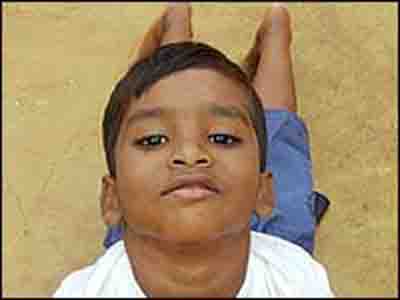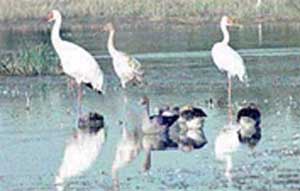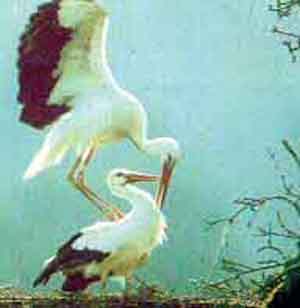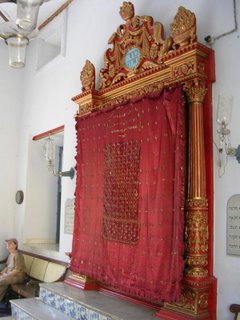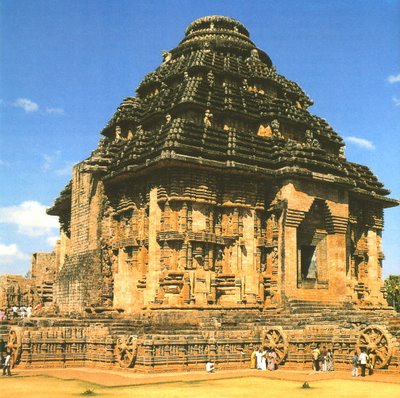
"Slumdog Millionaire" scooped up eight Oscars on Sunday, the most of any movie this year, including best motion picture, best cinematography, sound mixing, film editing, original score for composer A.R. Rahman and best song, "Jai Ho" for Rahman and lyricist Gulzar.Among the "Slumdog" honors, Briton Danny Boyle was named best director for the often dark but ultimately hopeful, a Dickensian-style tale set in an Indian city. Similar to the way Charles Dickens used Victorian London, Danny Boyle wanted to portray the dark side of Indian city , where a slum dweller poor boy Jamal Malik (Patel), an 18 year-old orphan from the slums of Mumbai who competes on a TV game show : "Who Wants To Be A Millionaire?" But when the show breaks for the night, police arrest him on suspicion of cheating; how could a street kid know so much? Desperate to prove his innocence, Jamal tells the story of his life in the slum where he and his brother grew up, of their adventures together on the road, of vicious encounters with local gangs, and of Latika (Pinto), the girl he loved and lost. Each chapter of his story reveals the key to the answer to one of the game show¹s questions. Each chapter of Jamal¹s increasingly layered story reveals where he learned the answers to the show¹s seemingly impossible quizzes. But one question remains a mystery: what is this young man with no apparent desire for riches really doing on the game show? When the new day dawns and Jamal returns to answer the final question, the Inspector and sixty million viewers are about to find out.
The film has raised a controversy over the country whether the western world is only interested in tales of poverty or at the most snake charmers and Kings and Queens .Some has raised the question that when India has 5600 newspapers... magazines in over twenty-one different Ianguages., with a combined readership of over 120 million ,when the country has reached the moon and back and when the third largest pool in the word of doctors, engineers and scientists are from India ,and also our country has the third largest army in the world ; how it is justified to glamourise those people who just to earn money, make movies which portray India as slum and poor Indians as Slum Dogs!! (See : http://furobike.blogspot.com/2009/02/indians-aint-slum-dogs.html )
But I differ from that blogger .My first point is ,with all the success we have achieved , is n’t it true that we couldn’t check widespread use of child labour and still the millions of abandoned street children who live on its railway platforms, or amputees and mangled polio victims who beg for small change at road junctions ? Why don’t we solemnly try to eradicate this social disease?
My second point is , it is a total misconception in our mind that only India or South Asian countries have the slums .Readers can access the description and conditions of slum in France, United Kingdom and USA from the following links :
http://www.nysun.com/comments/358
http://cache.daylife.com/imageserve/05SY8xx4zl5vR/610x.jpg
There is again a misconception about the slums , which I think media is responsible to create such fallacies. I have seen refrigerators,televison sets,modern domestic accessories ,two wheelers and even if four wheelers are also the common assets of the houses of Dharavi slums of Mumbai and Makarapura of Vadodara . The average city based Indian slum dwellers family can earn approximately 15,000 INR , which I think is sufficient for a standard living in India . What they lack are the education, cleanliness, pure water facility and good roads .We have to accept the challenges It is more required to make them educate rather than to provide any financial help .The government officials are more responsible in creating such slum areas .If city maintenance department of the municipal corporations have a strong will, we can make them proper habitation before they start to create any new slum area.
In last few years, the Indian films like “Lagan” and “Tare Zameen Pe” were also listed in the failure group for Oscar. so, it is also an unavoidable question that what made Oscar to see more in Danny Boyle rather than these movie makers?
The film has raised a controversy over the country whether the western world is only interested in tales of poverty or at the most snake charmers and Kings and Queens .Some has raised the question that when India has 5600 newspapers... magazines in over twenty-one different Ianguages., with a combined readership of over 120 million ,when the country has reached the moon and back and when the third largest pool in the word of doctors, engineers and scientists are from India ,and also our country has the third largest army in the world ; how it is justified to glamourise those people who just to earn money, make movies which portray India as slum and poor Indians as Slum Dogs!! (See : http://furobike.blogspot.com/2009/02/indians-aint-slum-dogs.html )
But I differ from that blogger .My first point is ,with all the success we have achieved , is n’t it true that we couldn’t check widespread use of child labour and still the millions of abandoned street children who live on its railway platforms, or amputees and mangled polio victims who beg for small change at road junctions ? Why don’t we solemnly try to eradicate this social disease?
My second point is , it is a total misconception in our mind that only India or South Asian countries have the slums .Readers can access the description and conditions of slum in France, United Kingdom and USA from the following links :
http://www.nysun.com/comments/358
http://cache.daylife.com/imageserve/05SY8xx4zl5vR/610x.jpg
There is again a misconception about the slums , which I think media is responsible to create such fallacies. I have seen refrigerators,televison sets,modern domestic accessories ,two wheelers and even if four wheelers are also the common assets of the houses of Dharavi slums of Mumbai and Makarapura of Vadodara . The average city based Indian slum dwellers family can earn approximately 15,000 INR , which I think is sufficient for a standard living in India . What they lack are the education, cleanliness, pure water facility and good roads .We have to accept the challenges It is more required to make them educate rather than to provide any financial help .The government officials are more responsible in creating such slum areas .If city maintenance department of the municipal corporations have a strong will, we can make them proper habitation before they start to create any new slum area.
In last few years, the Indian films like “Lagan” and “Tare Zameen Pe” were also listed in the failure group for Oscar. so, it is also an unavoidable question that what made Oscar to see more in Danny Boyle rather than these movie makers?







